Eun-Ah Kim
Quantum Many-Body Physics Calculations with Large Language Models
Mar 05, 2024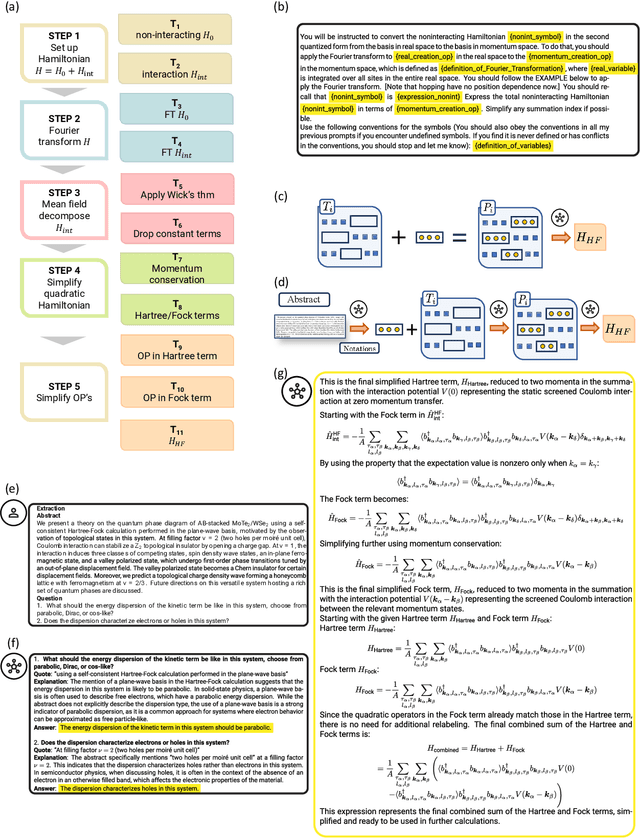
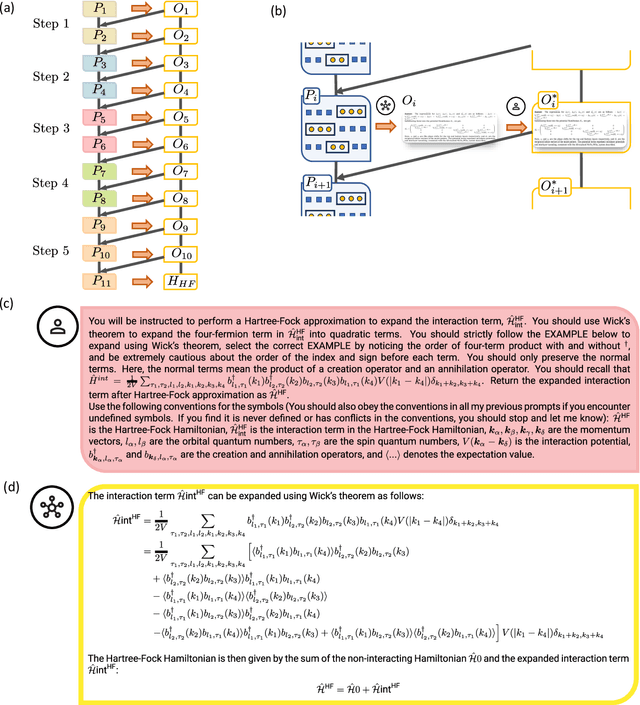
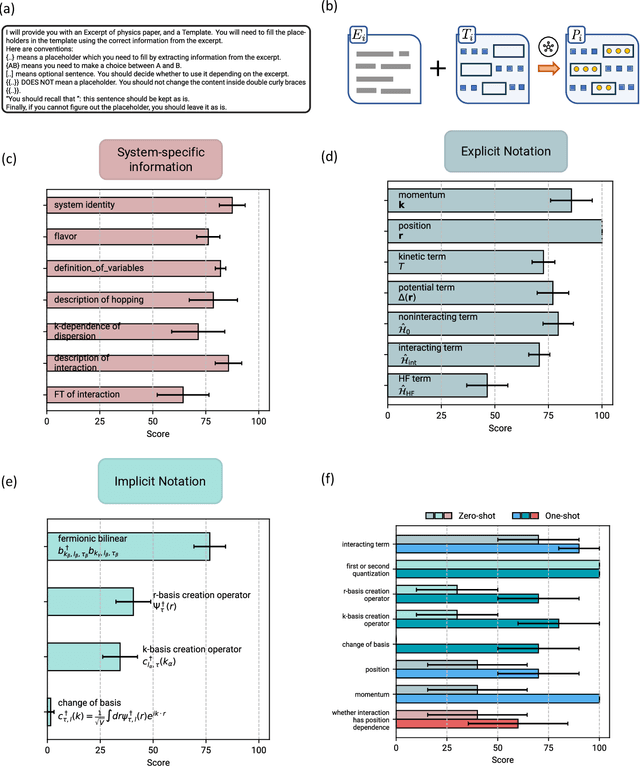
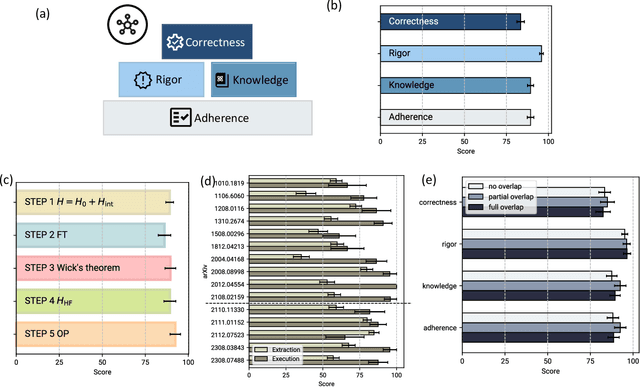
Abstract:Large language models (LLMs) have demonstrated an unprecedented ability to perform complex tasks in multiple domains, including mathematical and scientific reasoning. We demonstrate that with carefully designed prompts, LLMs can accurately carry out key calculations in research papers in theoretical physics. We focus on a broadly used approximation method in quantum physics: the Hartree-Fock method, requiring an analytic multi-step calculation deriving approximate Hamiltonian and corresponding self-consistency equations. To carry out the calculations using LLMs, we design multi-step prompt templates that break down the analytic calculation into standardized steps with placeholders for problem-specific information. We evaluate GPT-4's performance in executing the calculation for 15 research papers from the past decade, demonstrating that, with correction of intermediate steps, it can correctly derive the final Hartree-Fock Hamiltonian in 13 cases and makes minor errors in 2 cases. Aggregating across all research papers, we find an average score of 87.5 (out of 100) on the execution of individual calculation steps. Overall, the requisite skill for doing these calculations is at the graduate level in quantum condensed matter theory. We further use LLMs to mitigate the two primary bottlenecks in this evaluation process: (i) extracting information from papers to fill in templates and (ii) automatic scoring of the calculation steps, demonstrating good results in both cases. The strong performance is the first step for developing algorithms that automatically explore theoretical hypotheses at an unprecedented scale.
Materials Expert-Artificial Intelligence for Materials Discovery
Dec 05, 2023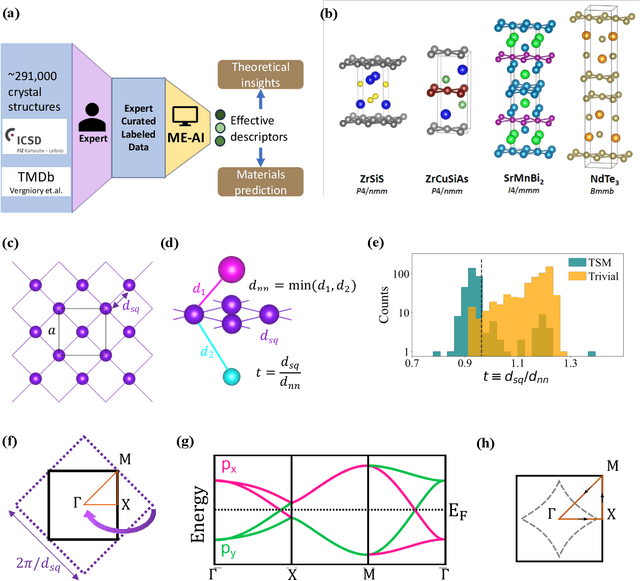
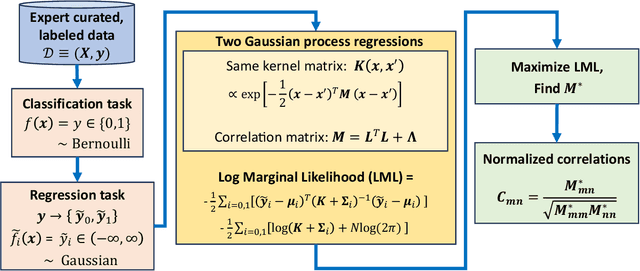

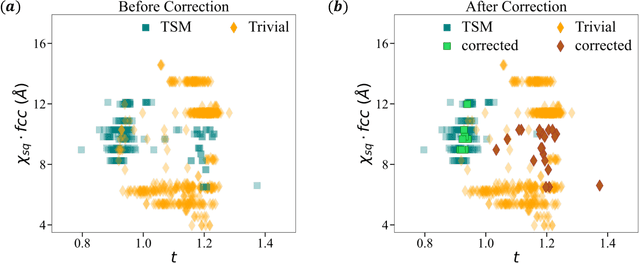
Abstract:The advent of material databases provides an unprecedented opportunity to uncover predictive descriptors for emergent material properties from vast data space. However, common reliance on high-throughput ab initio data necessarily inherits limitations of such data: mismatch with experiments. On the other hand, experimental decisions are often guided by an expert's intuition honed from experiences that are rarely articulated. We propose using machine learning to "bottle" such operational intuition into quantifiable descriptors using expertly curated measurement-based data. We introduce "Materials Expert-Artificial Intelligence" (ME-AI) to encapsulate and articulate this human intuition. As a first step towards such a program, we focus on the topological semimetal (TSM) among square-net materials as the property inspired by the expert-identified descriptor based on structural information: the tolerance factor. We start by curating a dataset encompassing 12 primary features of 879 square-net materials, using experimental data whenever possible. We then use Dirichlet-based Gaussian process regression using a specialized kernel to reveal composite descriptors for square-net topological semimetals. The ME-AI learned descriptors independently reproduce expert intuition and expand upon it. Specifically, new descriptors point to hypervalency as a critical chemical feature predicting TSM within square-net compounds. Our success with a carefully defined problem points to the "machine bottling human insight" approach as promising for machine learning-aided material discovery.
Machine learning feature discovery of spinon Fermi surface
Jun 05, 2023Abstract:With rapid progress in simulation of strongly interacting quantum Hamiltonians, the challenge in characterizing unknown phases becomes a bottleneck for scientific progress. We demonstrate that a Quantum-Classical hybrid approach (QuCl) of mining the projective snapshots with interpretable classical machine learning, can unveil new signatures of seemingly featureless quantum states. The Kitaev-Heisenberg model on a honeycomb lattice with bond-dependent frustrated interactions presents an ideal system to test QuCl. The model hosts a wealth of quantum spin liquid states: gapped and gapless $\mathbb{Z}_2$ spin liquids, and a chiral spin liquid (CSL) phase in a small external magnetic field. Recently, various simulations have found a new intermediate gapless phase (IGP), sandwiched between the CSL and a partially polarized phase, launching a debate over its elusive nature. We reveal signatures of phases in the model by contrasting two phases pairwise using an interpretable neural network, the correlator convolutional neural network (CCNN). We train the CCNN with a labeled collection of sampled projective measurements and reveal signatures of each phase through regularization path analysis. We show that QuCl reproduces known features of established spin liquid phases and ordered phases. Most significantly, we identify a signature motif of the field-induced IGP in the spin channel perpendicular to the field direction, which we interpret as a signature of Friedel oscillations of gapless spinons forming a Fermi surface. Our predictions can guide future experimental searches for $U(1)$ spin liquids.
Machine learning discovery of new phases in programmable quantum simulator snapshots
Dec 20, 2021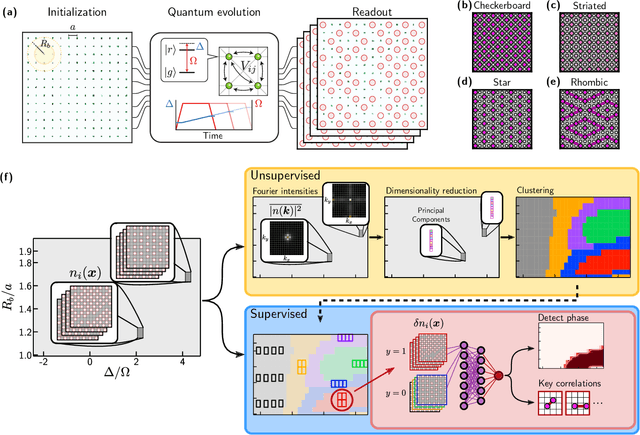
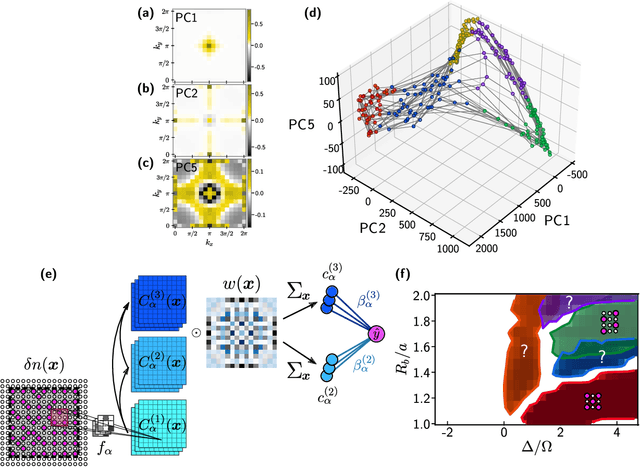
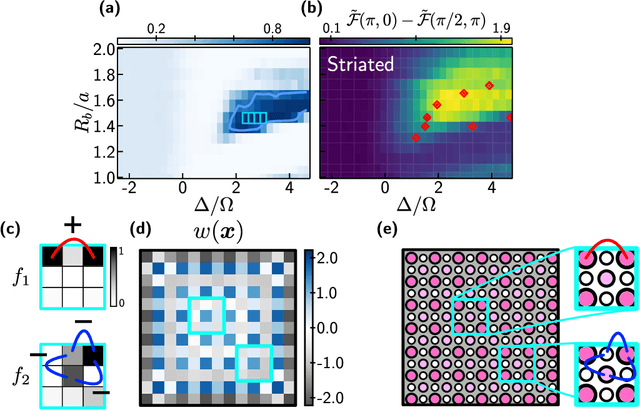
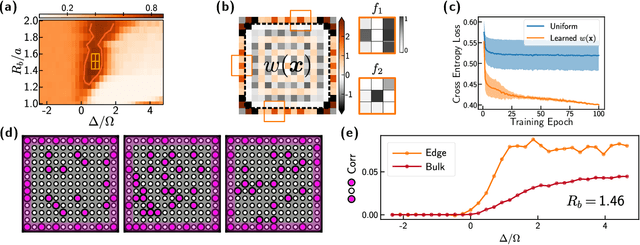
Abstract:Machine learning has recently emerged as a promising approach for studying complex phenomena characterized by rich datasets. In particular, data-centric approaches lend to the possibility of automatically discovering structures in experimental datasets that manual inspection may miss. Here, we introduce an interpretable unsupervised-supervised hybrid machine learning approach, the hybrid-correlation convolutional neural network (Hybrid-CCNN), and apply it to experimental data generated using a programmable quantum simulator based on Rydberg atom arrays. Specifically, we apply Hybrid-CCNN to analyze new quantum phases on square lattices with programmable interactions. The initial unsupervised dimensionality reduction and clustering stage first reveals five distinct quantum phase regions. In a second supervised stage, we refine these phase boundaries and characterize each phase by training fully interpretable CCNNs and extracting the relevant correlations for each phase. The characteristic spatial weightings and snippets of correlations specifically recognized in each phase capture quantum fluctuations in the striated phase and identify two previously undetected phases, the rhombic and boundary-ordered phases. These observations demonstrate that a combination of programmable quantum simulators with machine learning can be used as a powerful tool for detailed exploration of correlated quantum states of matter.
Correlator Convolutional Neural Networks: An Interpretable Architecture for Image-like Quantum Matter Data
Nov 06, 2020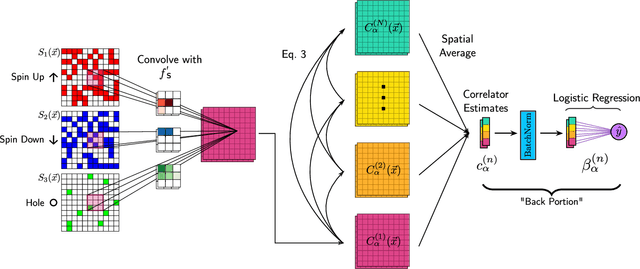
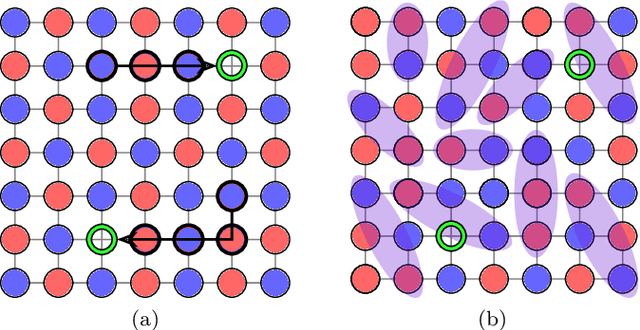
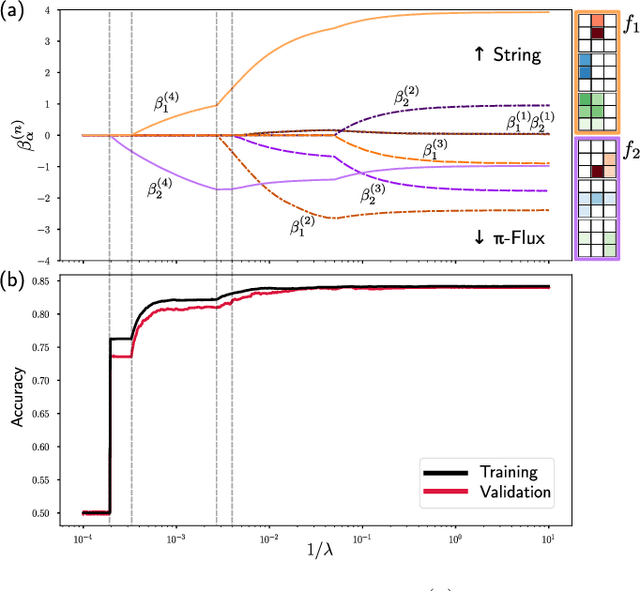
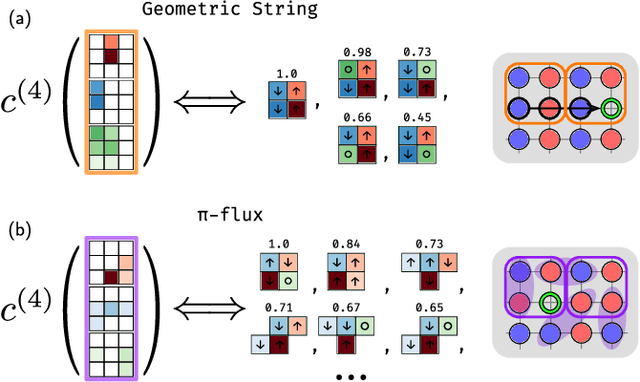
Abstract:Machine learning models are a powerful theoretical tool for analyzing data from quantum simulators, in which results of experiments are sets of snapshots of many-body states. Recently, they have been successfully applied to distinguish between snapshots that can not be identified using traditional one and two point correlation functions. Thus far, the complexity of these models has inhibited new physical insights from this approach. Here, using a novel set of nonlinearities we develop a network architecture that discovers features in the data which are directly interpretable in terms of physical observables. In particular, our network can be understood as uncovering high-order correlators which significantly differ between the data studied. We demonstrate this new architecture on sets of simulated snapshots produced by two candidate theories approximating the doped Fermi-Hubbard model, which is realized in state-of-the art quantum gas microscopy experiments. From the trained networks, we uncover that the key distinguishing features are fourth-order spin-charge correlators, providing a means to compare experimental data to theoretical predictions. Our approach lends itself well to the construction of simple, end-to-end interpretable architectures and is applicable to arbitrary lattice data, thus paving the way for new physical insights from machine learning studies of experimental as well as numerical data.
Attention-based Quantum Tomography
Jun 22, 2020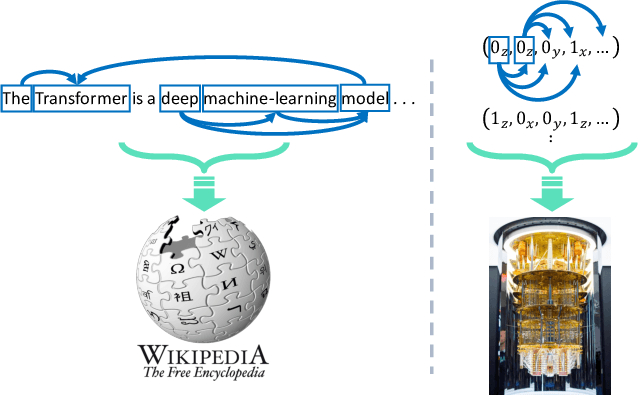
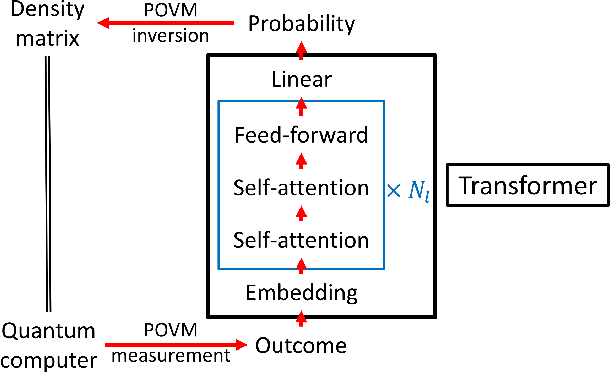
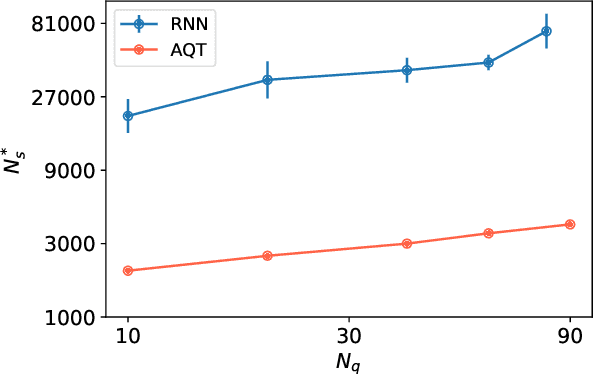
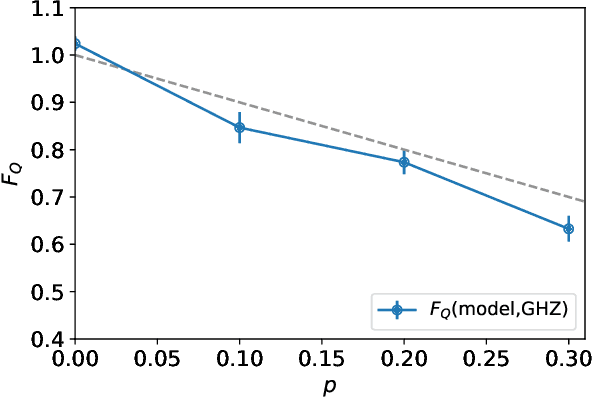
Abstract:With rapid progress across platforms for quantum systems, the problem of many-body quantum state reconstruction for noisy quantum states becomes an important challenge. Recent works found promise in recasting the problem of quantum state reconstruction to learning the probability distribution of quantum state measurement vectors using generative neural network models. Here we propose the "Attention-based Quantum Tomography" (AQT), a quantum state reconstruction using an attention mechanism-based generative network that learns the mixed state density matrix of a noisy quantum state. The AQT is based on the model proposed in "Attention is all you need" by Vishwani et al (2017) that is designed to learn long-range correlations in natural language sentences and thereby outperform previous natural language processing models. We demonstrate not only that AQT outperforms earlier neural-network-based quantum state reconstruction on identical tasks but that AQT can accurately reconstruct the density matrix associated with a noisy quantum state experimentally realized in an IBMQ quantum computer. We speculate the success of the AQT stems from its ability to model quantum entanglement across the entire quantum system much as the attention model for natural language processing captures the correlations among words in a sentence.
 Add to Chrome
Add to Chrome Add to Firefox
Add to Firefox Add to Edge
Add to Edge